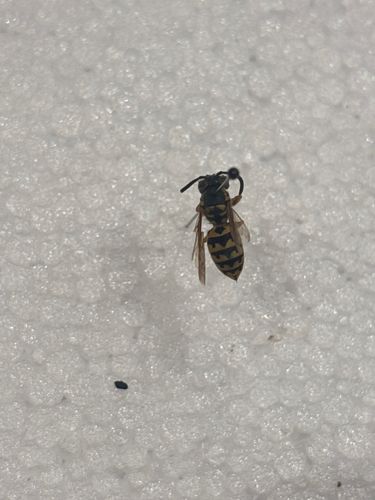Yellowjacket
Scientific Name: Vespula spp. or Dolichovespula spp.
Order & Family: Hymenoptera, Vespidae
Size: Workers typically range from 10 to 15 mm (0.4 to 0.6 inches) in length, while queens can be slightly larger.

Natural Habitat
Yellowjackets are generally found in diverse habitats including forests, urban areas, grasslands, and agricultural fields. They build nests in protected spots, either underground in abandoned rodent burrows or in aerial locations like trees, shrubs, or structural cavities of buildings.
Diet & Feeding
Yellowjackets are omnivorous. Adults feed on nectar, fruit juices, and other sugary substances. They also hunt insects, spiders, and other arthropods to feed their larvae, which require protein for development. They are also scavengers, frequently found around human food sources.
Behavior Patterns
Yellowjackets are social insects living in colonies that can number in the thousands. They are known for their aggressive defense of their nests when disturbed. They are active during the day and are particularly abundant in late summer and early fall. Unlike bees, yellowjackets can sting multiple times as their stinger is not barbed.
Risks & Benefits
Potential risks include painful stings, which can cause allergic reactions in sensitive individuals, ranging from localized swelling to anaphylaxis. Benefits include their role as predators of many agricultural pests, contributing to natural pest control. They also contribute to pollination to a lesser extent than bees by visiting flowers for nectar.
Identified on: 9/19/2025